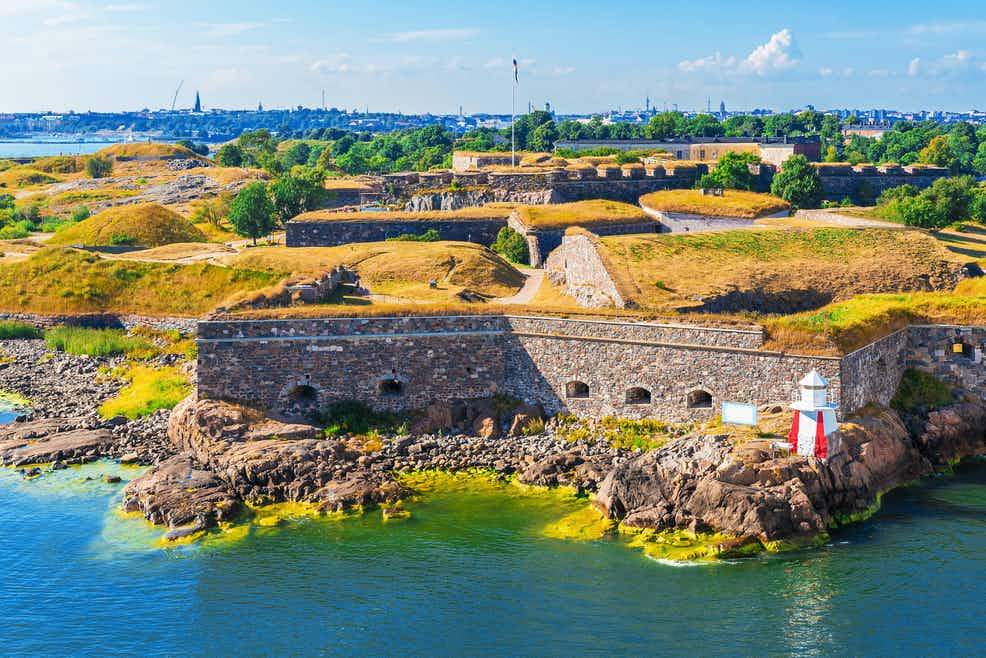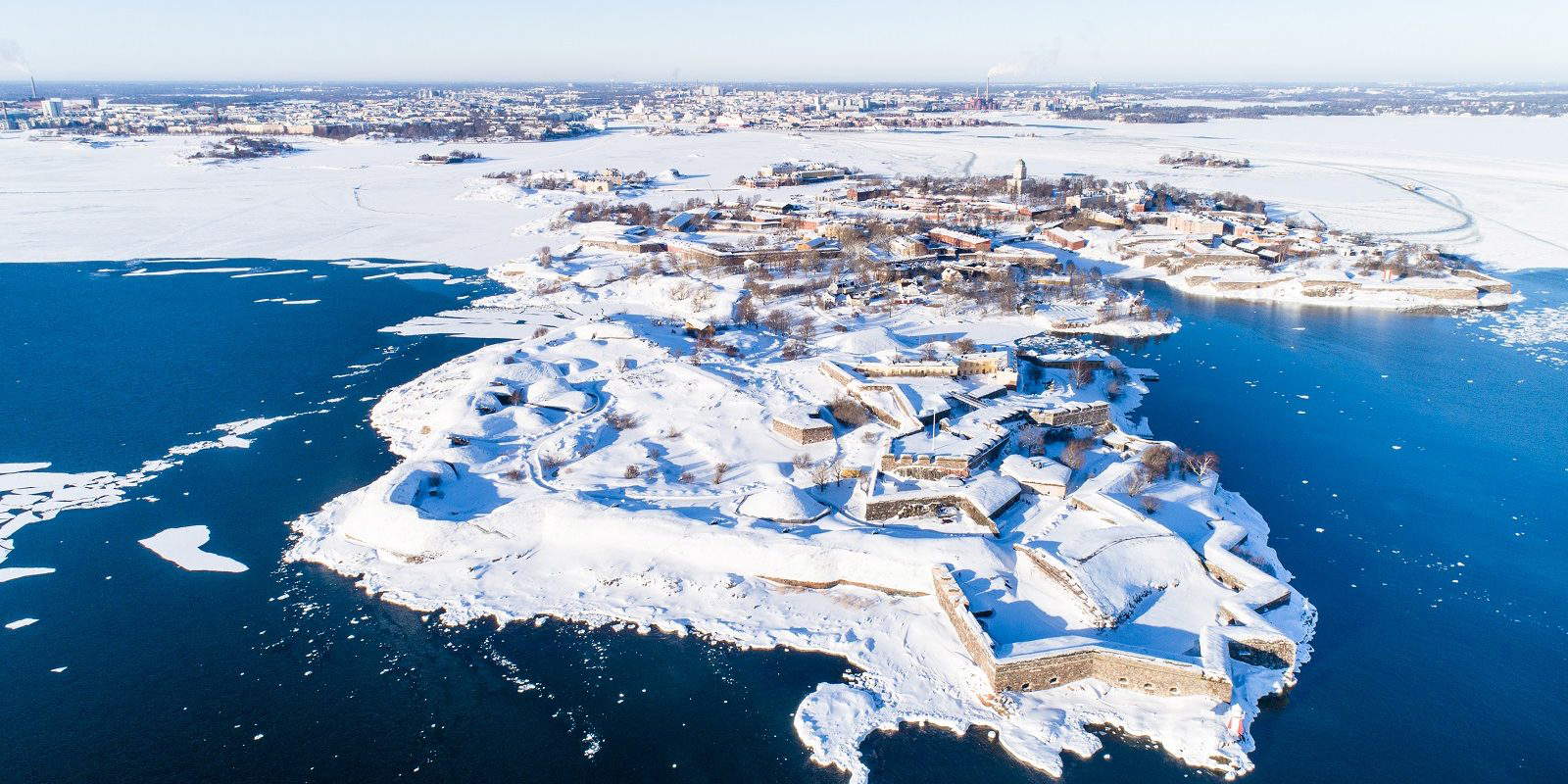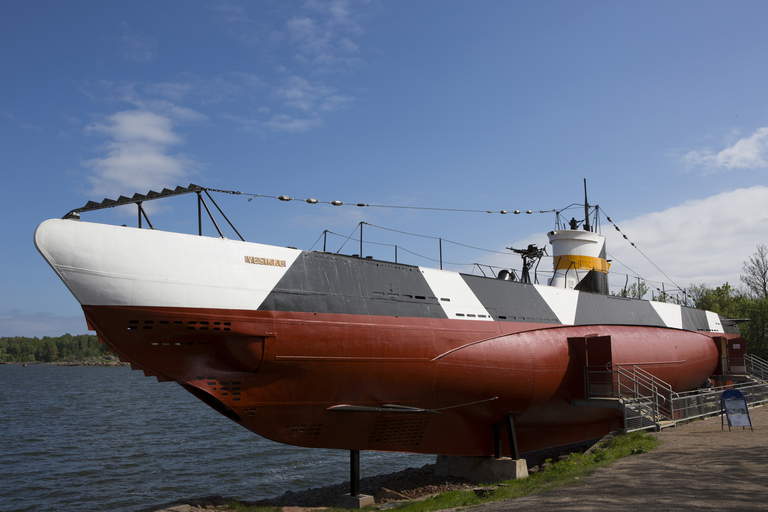A unique mid-eighteenth-century fortress built on a group of islets when Finland was part of Sweden: this is Suomenlinna, the country’s first site to be inscribed (in 1991) on UNESCO’s World Heritage List. It is located just outside Helsinki, and construction work on this particular maritime fortress began in 1748: the goal of Sweden, which had been at war with Russia in the early part of the 18th century, was to strengthen this part of its territory by activating a naval base in Helsinki. It was therefore decided on the small archipelago of the Susiluodot Islands, and in 1750 the name was found: the Swedes named the fort Sveaborg (“Viapori” in Finnish, by homophony: literally, “Sveaborg” means “Castle of Sweden,” and conversely “Suomenlinna,” the name the fortress later acquired, has the meaning of “Castle of Finland”). However, the plans did not go as planned: it took forty years for the first phase of construction to be finished, and in any case it was never finished as it was designed. In fact, the Pomeranian War, which occurred between 1756 and 1763, caused resources to be diverted elsewhere, but still by the end of the eighteenth century the fortress could function as a naval base in the Russo-Swedish War of 1788-1790, though without being directly involved in the war events. It was first touched by it in 1808, when it was besieged and captured by the Russians, who in turn made it their naval base when the Grand Duchy of Finland became an autonomous but dependent state of Russia.
During the Russian era, the fortress (for which, during this period, the name Viapori was used) was expanded to occupy some of the surrounding islands: quarters were built for the military and also an Orthodox church, designed by the architect Konstantin Ton. During the Crimean War, the fortress was subjected to bombardment in August 1855 by the Anglo-French fleet, suffering extensive damage that was only fixed many years later. Following the event, Viapori’s importance gradually declined, although it formed a part of the so-called “Peter the Great’s Naval Fortress” during World War I: it was the complex of fortifications that served to protect the city of St. Petersburg. The fortress became permanently Finnish after the Russian Revolution: the country’s government finally renamed it “Suomenlinna” in 1918. It was a base for the Finnish fleet during World War II, and remained one of Finland’s Defense headquarters for a few more years, until, in the mid-1960s, the Defense decided to leave Suomenlinna. In 1972 the last military personnel left the fortress (only the Naval Academy remained there, which still has its headquarters in the castle), which became first an administrative headquarters, then a residential complex (about 800 people still live there) as well as the site of several museums.
There are six museums housed in the fortress: the Suomenlinna Museum, theEhrensvärd Museum, the Military Museum, the Vesikko Submarine, the Toy Museum, and the Customs Museum. They are located in separate areas of Suomenlinna and tickets to visit them are purchased separately.
 |
| Suomenlinna |
 |
| View of the complex. Suomenlinna photo. |
 |
| View of the complex under snow. Photo Suomenlinna |
 |
| Ehrensvärd Museum. Photo Suomenlinna |
 |
| The Vesikko Submarine. Photo Suomenlinna |
 |
| The Toy Museum. Photo Suomenlinna |
The Suomenlinna Museum is the main museum in the fortress: it is the one that tells its centuries-old history. On display are objects, tools, weapons, and ammunition that were found in the fortress’s storerooms and warehouses, as well as interactive displays that tell the story of Suomenlinna and the lives of the people who lived and still live there. The upper floor of the museum, on the other hand, is dedicated to publicizing the conservation activities that experts follow in the fortress, as well as hosting temporary exhibitions. The second museum, theEhrensvärd Museum, is housed in what was once the residence of the fortress commander, and is named after Sveaborg’s founder, Field Marshal Augustin Ehrensvärd (Fullerö, 1710 - Saris, 1772), an officer in the Swedish army but also a military architect and artist. The museum preserves works of art (mainly portraits), weapons, period furniture: these are largely the historic furnishings and artifacts that decorated the residential parts of Suomenlinna. The Military Museum is divided into two parts, housed in two different buildings: the first tells of the four wars in which Finland participated during the 20th century (the Civil War of 1918, following which it became a fully independent state, and the three separate conflicts fought during World War II: the Winter War of 1939-1940, the Continuation War of 1941-1944, and the Lapland War of 1944-1945). The second one, on the other hand, is devoted to the history of the Finnish armed forces in the postwar period.
One of the main attractions in Suomenlinna is the Vesikko Submarine, a real submarine that was used during World War II: after the wartime events (the Paris Treaties signed in 1947 prevented Finland from having submarines, except for Vesikko), it was completely restored and opened to the public as a museum in 1973 (although it is welcomes visitors only in the summer months). The unique Toy Museum is located in a colorful villa and exhibits toys and playthings from the early 19th century to the 1960s. Finally, the Customs Museum, located on the island of Susisaari, tells the customs history of Finland, with also exhibits and displays on this theme.
As mentioned, the Suomenlinna fortress is still inhabited, and is therefore a unique case of a city within a city, with 800 inhabitants residing there permanently and another 400 staying for more or less extended periods for work reasons. There are therefore a variety of amenities to be found on the islands: from cafes and restaurants (some are among the most renowned in Helsinki) to the saunas so beloved by Finns, from picnic areas to the public library. There is also no shortage of stores where one can shop for souvenirs and typical products. Suomenlinna, then, is not simply a museum or a historical monument, but a real community that lives very closely with its historical and cultural heritage. In fact: it lives in it.
 |
| A museum--in which 800 people live. Suomenlinna Fortress in Helsinki |
Warning: the translation into English of the original Italian article was created using automatic tools. We undertake to review all articles, but we do not guarantee the total absence of inaccuracies in the translation due to the program. You can find the original by clicking on the ITA button. If you find any mistake,please contact us.